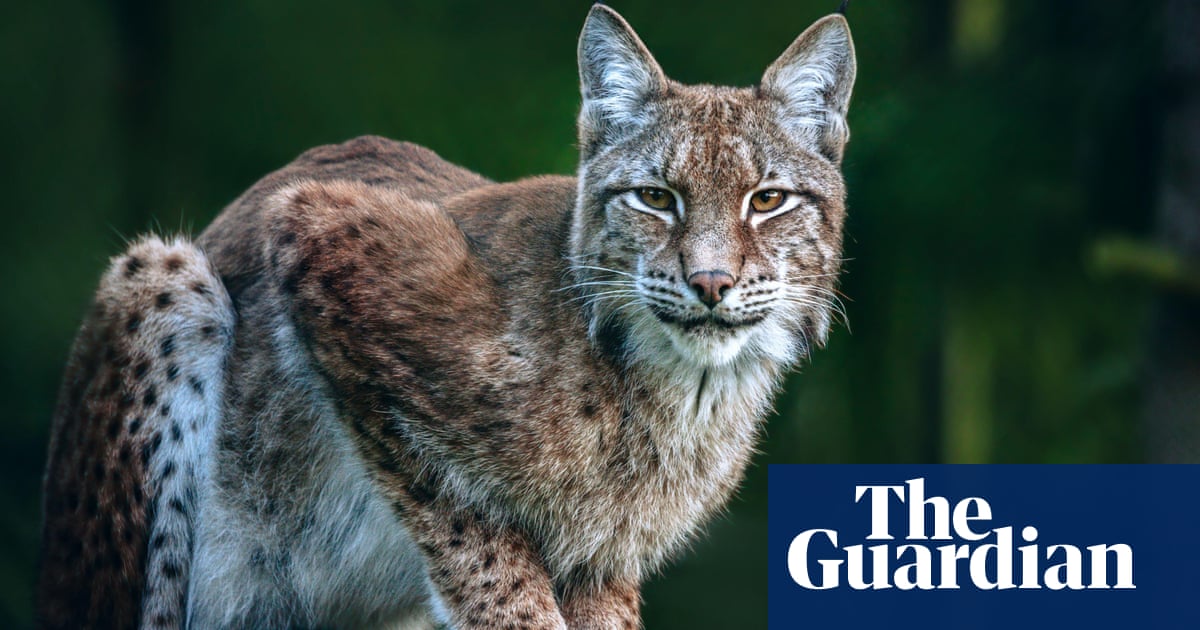The missing lynx: how the rise of border walls has split up wildlife populations | Animals

The lynxes of the Białowieża forest once freely prowled through 1,420 sq km (548 sq miles) of ancient woodland. Then, in 2022, the habitat was abruptly sliced in two. Poland built a 115-mile (186km) wall across its border with Belarus to stop refugees and migrants entering the EU. About 15 lynxes were left stranded on the Polish side of the forest, forced into a genetic bottleneck.
The 5.5-metre high barrier, which is topped with wire and cameras, also dissects the forest’s population of bison, wolves and elk. Researchers monitored 10 sites along the border, walking along sections and counting signs of humans and wildlife.
“I could not have foreseen the diversity of impacts that we ended up finding,” says the lead author of the paper, Katarzyna Nowak, from the Polish Academy of Sciences’ Mammal Research Institute.
Humans have been building walls for thousands of years, but the speed and scale with which they are now being constructed has ballooned over recent decades.
With refugee crises in Europe and Asia, and the rise of governments cracking down on immigration, the planet is increasingly crisscrossed with steel barriers, chain-link fencing and razor wire – with significant consequences for wildlife.
There are now an estimated 74 border walls globally, up from just six in 1989, with more in the pipeline. “The hardening of international borders through fortification and militarisation is on the rise,” researchers say in the paper on the impacts of the Polish-Belarusian border wall.
In a separate paper published in February, another researcher argues for “ecological peace corridors” to protect wildlife movement amid growing human conflict.
At the same time that borders are strengthened, the need for humans and other animals to migrate is being supercharged by climate breakdown. “It is a worrying future in multiple respects,” says Dr Stuart Butchart, chief scientist at BirdLife International. “This is a worldwide phenomenon that is going to become of increasing importance.”
His research found that border walls obstruct the ranges of more than 700 species of mammals, including leopards, tigers, cheetah and the critically endangered Saiga antelope. The study identified 20,000 miles of borders fortified with fences and walls, which can cause habitats to fragment and create injuries from entanglement, genetic bottlenecks and blocked migration routes.
The US-Mexican border wall – which was found to have the most impact of those studied – bisects the ranges of 120 mammals alone. Pygmy owls, which stay close to the ground for safety, do not fly high enough to cross the wall, and populations of pumas and coatis – a raccoon-like animal found across Latin America – have fallen. Bighorn sheep risk becoming “zombie species” as the populations become too genetically fragmented and unable to move sufficiently to adapt to climate change.
The study of the Polish-Belarusian border showed animals were keeping their distance from the wall because they were scared of it. Despite the fact that it passed through a rich forest habitat, Nowak says: “We had very few signs of animals along the border.”
Thirty-six cameras were up for more than a year and images of lynxes were only found on them twice. Humans were more frequently seen on cameras than wildlife, especially at border sites.
Sound recordings revealed human sounds – such as vehicles, music, dogs and gunshots – penetrated up to 250 metres into the forest, which is a Unesco world heritage site.
Rubbish lined the border, drawing dogs, cats and other scavengers to the area. “This again creates an unnatural interface, not just between people and wild animals, but also domestic animals,” says Nowak.
Plant surveys suggested invasive species might be able to survive in the “sun-streaked strip in the middle of the forest”, says Nowak, who is worried that the forest could start to split into two.
Borderland regions such as Białowieża Forest can also be among the continent’s most biodiverse places. The border fence between Slovenia and Croatia has sliced up the Dinaric mountain range, home to some of the most important brown bear and wolf populations in Europe.
The region’s lynx population is threatened with high levels of inbreeding, with researchers warning that the fence “may just be the last push for the population to spiral down the extinction vortex”. The 3,000-mile border between China and Mongolia, which is almost entirely fenced, has blocked the migrations of Asiatic wild ass.
Even if these fences are removed in the future, migratory routes are not easily re-routed. Red deer on the border between the Czech Republic and the former West Germany still do not cross what was the “iron curtain” – even though the electric fence that divided the countries was taken down 25 years ago, a study found. The life expectancy of a deer is 15 years, so no deer alive at the time of the study would have ever encountered the barrier.
A 2025 review of the impacts of border walls had four key recommendations to make them less damaging: leave gaps in the fencing; cut down on light and noise; avoid the concertina razor-wire tops, which many animals die on; and increase cooperation between countries on the borders.
To ease the pressure on wildlife, scientists are pushing for small gaps in fencing to allow species through. The US-Mexican border wall covers more than 700 miles of the almost 2,000-mile long frontier, and crosses the Madrean Sky Islands – patches of woodland that are home to the greatest diversity of mammals, reptiles and ants in the US.
A study looked at the 13 small passages for wildlife along 80 miles of continuous border – or roughly one every 10km – each about the size of an A4 sheet of paper. Researchers collected and analysed more than 12,000 videos of animals encountering them.
Deer, bears, wolves and pronghorn sheep were all blocked by the wall, but cameras showed coyotes, wild pig-like peccaries, American badgers and even some smaller mountain lions were squeezing through.
“We were surprised by how busy the A4 holes ended up being,” says Eamon Harrity, wildlife programme manager at Sky Islands Alliance in Arizona and lead author of the study of the wall along the US-Mexico border.
“We want more of them,” says Harrity. “They need to be, at a minimum, every half a kilometre.”
Find more age of extinction coverage here, and follow the biodiversity reporters Phoebe Weston and Patrick Greenfield in the Guardian app for more nature coverage
Source link






